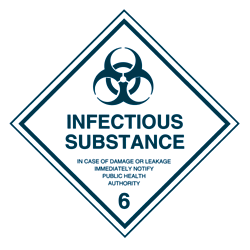
Edition 9 - June, 2001
 Edition 9 - June, 2001 |
The safe packaging of infectious microbial samples |
Micro-organisms are shipped daily from one lab or culture collection to another. The packaging of microbial cultures, including samples containing micro-organisms, must be adequate lest the material present a hazard to people who may handle it during transport (including administrative, secretarial, and other support personnel) and to laboratory workers, plants, animals, or the environment at large. Obviously, this applies in particular to the shipment of infectious substances. The United Nations (UN) Recommendations on the Transport of Dangerous Goods defines infectious substances as those containing viable micro-organisms such as bacteria, viruses, rickettsiae, parasites or fungi, that are known or reasonably believed to cause disease in humans or animals.

|
The international regulations for the packaging and shipment of infectious material by any mode of transport are based on the Recommendations of the UN Committee of Experts on the Transport of Dangerous Goods. The Universal Postal Union (UPU) reflects these recommendations in its regulations, particularly for packaging. The International Civil Aviation Organization (ICAO) and the International Air Transport Association (IATA) have also incorporated the UN recommendations in their respective regulations.
Infectious substances may only be transported in packaging that meets the UN
Class 6.2 specifications. These specifications are contained in ICAO and IATA
Regulations in the form of Packing Instruction 602. UN approved packaging systems
are available commercially.
 |
It is imperative that the packages are duly documented and that the correct hazard labels are affixed. Data forms, letters and other types of information that identify or describe the specimen and also identify the shipper and receiver should be enclosed. will be set up on the same site.
Finally, we would like to thank all delegates who attended the workshop and actively participated in the discussions. We also acknowledge the highly appreciated contribution of the World Intellectual Property Organization, WIPO, and the financial support of the European Commission Directorate General XII for Science, Research and Development.
More detailed information on the packaging and transport of micro-organisms can be found on the following websites:
A new brochure describing the activities of BCCM has been published. It is available free of charge and can be requested at bccm.ostc@belspo.be or by fax at +32 (0)2 230 59 12
Home |
Contents Edition 9 - June, 2001 |
Next Article Edition 9 - June, 2001 |